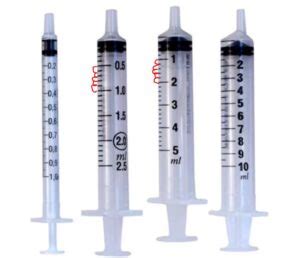How Many Milligrams Are In 1 Cc
Treneri
Apr 08, 2025 · 4 min read

Table of Contents
How Many Milligrams are in 1 cc? Understanding Units of Measurement
The question "How many milligrams are in 1 cc?" isn't straightforward. It's a common query stemming from a misunderstanding of units and the crucial role of density. While seemingly simple, the answer requires a deeper understanding of the relationship between volume (cubic centimeters, cc), mass (milligrams, mg), and density. This article will thoroughly explore this relationship, explain the complexities involved, and provide a practical framework for accurate conversion.
Understanding the Units
Before diving into the conversion, let's clarify the units involved:
-
Cubic Centimeter (cc or cm³): This is a unit of volume, representing the space occupied by a substance. 1 cc is equivalent to 1 milliliter (mL). Think of it as the volume of a small cube with sides measuring 1 centimeter each.
-
Milligram (mg): This is a unit of mass, representing the amount of matter in a substance. It's a thousandth of a gram (1 g = 1000 mg).
The key to understanding the conversion lies in the concept of density.
The Crucial Role of Density
Density is the mass of a substance per unit volume. It's expressed as:
Density = Mass / Volume
This means the mass (in milligrams) contained within 1 cc (or 1 mL) depends entirely on the density of the substance. Different substances have different densities. For example:
-
Water: At 4°C (approximately), the density of water is approximately 1 gram per cubic centimeter (1 g/cm³). This translates to 1000 mg/cm³. Therefore, 1 cc of water contains approximately 1000 mg of water.
-
Mercury: Mercury is much denser than water. Its density is approximately 13.6 g/cm³, which is equivalent to 13600 mg/cm³. Therefore, 1 cc of mercury contains approximately 13600 mg of mercury.
-
Air: Air is far less dense than water. Its density varies with temperature and pressure, but it's typically around 1.2 mg/cm³. Therefore, 1 cc of air contains approximately 1.2 mg of air.
This illustrates that without knowing the density of the substance, we cannot determine the mass (in milligrams) present in 1 cc.
The Conversion Formula
To calculate the mass (in milligrams) in 1 cc of a substance, we can rearrange the density formula:
Mass (mg) = Density (mg/cm³) * Volume (cm³)
Since the volume is 1 cm³, the formula simplifies to:
Mass (mg) = Density (mg/cm³)
In essence, the mass in milligrams is numerically equal to the density in milligrams per cubic centimeter.
Practical Applications and Examples
Let's look at some practical examples to solidify our understanding:
Example 1: Calculating the mass of a medication
Suppose a medication has a density of 1.2 g/cm³. To find the mass in milligrams of 1 cc of this medication, we first convert the density to mg/cm³:
1.2 g/cm³ * 1000 mg/g = 1200 mg/cm³
Therefore, 1 cc of this medication contains 1200 mg.
Example 2: Determining the mass of a chemical solution
A chemical solution has a density of 0.8 g/cm³. What is the mass in milligrams in 1 cc?
0.8 g/cm³ * 1000 mg/g = 800 mg/cm³
Thus, 1 cc of this solution contains 800 mg.
Example 3: Working with less dense substances
Consider ethanol (drinking alcohol). It has a density of approximately 0.789 g/cm³. To find the mass in milligrams of 1 cc of ethanol:
0.789 g/cm³ * 1000 mg/g = 789 mg/cm³
Therefore, 1 cc of ethanol contains approximately 789 mg.
Addressing Common Misconceptions
It's crucial to debunk some common misconceptions:
-
There's no universal conversion: It's incorrect to assume a fixed number of milligrams exists in every 1 cc of any substance. The mass varies significantly based on the substance's density.
-
Units matter: Always pay close attention to units. Incorrect unit conversions can lead to significant errors in calculations.
-
Density is key: Without knowing the density of a substance, any conversion attempt will be inaccurate.
Beyond the Basics: Advanced Considerations
While the above provides a fundamental understanding, advanced considerations include:
-
Temperature and Pressure: The density of substances can change with temperature and pressure fluctuations. Accurate calculations require considering these factors, especially for gases.
-
Non-homogeneous Substances: If the substance is not homogeneous (its composition varies across different points), calculating the density becomes more challenging. In such cases, an average density may be used as an approximation.
-
Using different units: While we focused on milligrams and cubic centimeters, you might encounter different units like grams, liters, etc. You need to ensure consistent units throughout the calculation.
Conclusion: Precision in Measurement
Determining how many milligrams are in 1 cc requires a clear understanding of the relationship between volume, mass, and density. There is no universal answer; the value depends solely on the substance's density. Accurate calculations require careful attention to units, consideration of temperature and pressure influences (especially for gases), and awareness of the substance's homogeneity. Remembering that mass (in mg) = density (mg/cm³) when dealing with 1 cc simplifies the conversion significantly, provided you know the density. Always prioritize precision in measurement, ensuring the correct application of scientific principles to avoid errors. Understanding these fundamentals allows for accurate calculations in various scientific, medical, and engineering applications.
Latest Posts
Latest Posts
-
How Many Hours Are In 8 Years
Apr 08, 2025
-
Cuanto Equivale Un Pie En Centimetros
Apr 08, 2025
-
What Is 4 Percent Of 16
Apr 08, 2025
-
Square Foot To Board Foot Conversion
Apr 08, 2025
-
How Many Years Since 2017 To 2024
Apr 08, 2025
Related Post
Thank you for visiting our website which covers about How Many Milligrams Are In 1 Cc . We hope the information provided has been useful to you. Feel free to contact us if you have any questions or need further assistance. See you next time and don't miss to bookmark.